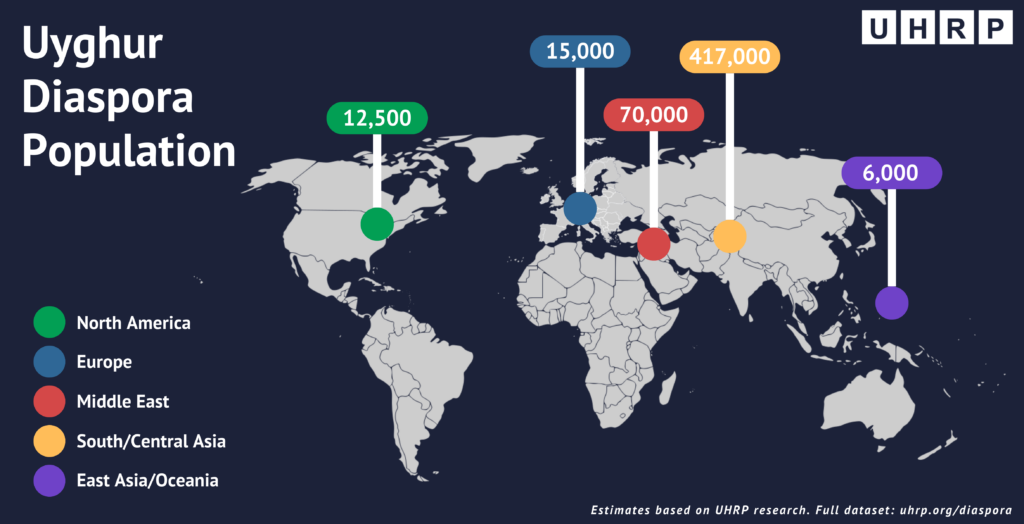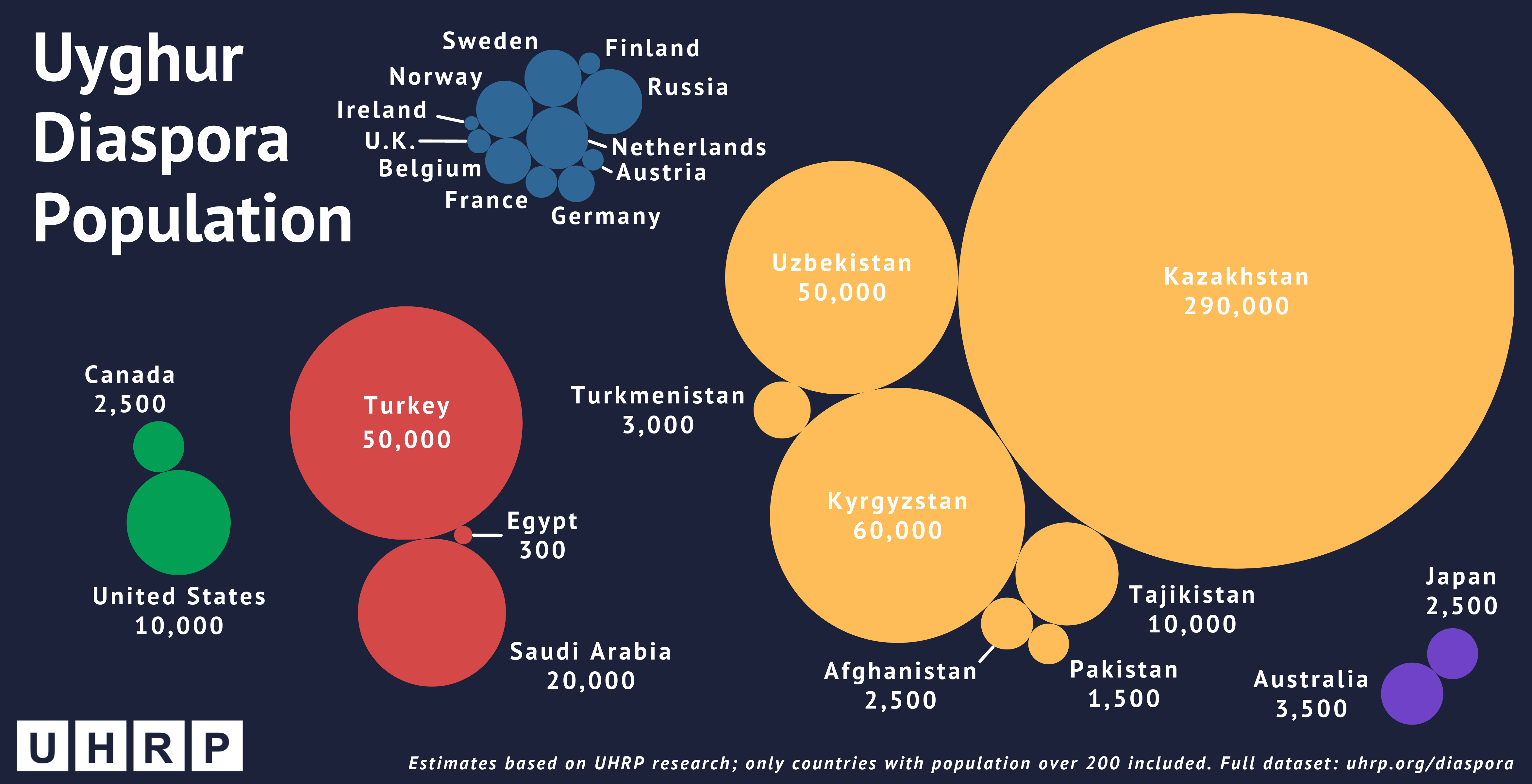A Uyghur Human Rights Project briefing by Peter Irwin. Read our press statement on the briefing.
November 21, 2023, UHRP
I. Summary
Uyghurs make up the plurality of East Turkistan’s inhabitants, numbering around 12 million, but increasingly find themselves living diasporic lives. Successive waves of Uyghurs have emigrated from their homeland or fled during periods of Chinese government repression over the last century.
Given significant limitations on access to information in East Turkistan, researchers have increasingly relied on Uyghur networks in the diaspora to better understand dynamics and trends on the ground.
In this short briefing, the Uyghur Human Rights Project (UHRP) maps the Uyghur diaspora around the world in order to better understand where Uyghurs have settled after fleeing or emigrating from China. Our research aims to aid researchers, journalists, civil society, and governments working in support of Uyghurs.
Uyghur culture and identity is contested, and often contingent upon the local context. This is particularly relevant in diasporic communities where new generations are influenced by local cultures and environments. Moreover, Uyghurs have become clear targets for transnational repression emanating from Beijing.
Relying on estimates from census data, community members, researchers, and other sources, we provide an estimate of the total population of Uyghurs living in various countries abroad; in some cases, we include an estimated population range.

II. Additional Notes
Several additional factors should also be taken into consideration when considering the data compiled in this briefing:
- We have chosen to identify Uyghur communities where possible, but it is almost certain that Uyghur individuals and families live in every corner of the globe. We have tried, therefore, to identify countries that host more than 10 Uyghurs, or where community members are known to the wider Uyghur community abroad.
- Ethnic identities are dynamic and contested, so any effort to “count” the number of any group will inevitably be a challenge. This is especially true in Central Asia, where Uyghurs have lived for decades, even centuries, across the present-day border areas between China and Kazakhstan, Kyrgyzstan, and Uzbekistan. In these countries in particular, Uyghurs have integrated with local populations for decades, especially considering that they share myriad cultural traits.
- Discrimination against non-nationals has been documented in Central Asia in particular, causing some Uyghurs to identify officially with the dominant ethnic group, especially in their relationship with the government. As a result, it is almost certain that census estimates in Central Asian countries undercount the number of Uyghurs residing there.
- Given migration patterns over time, the numbers will understandably shift, and UHRP will periodically reassess our estimates based on new information.
Read full report here.

